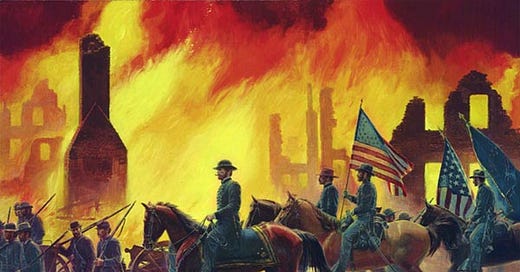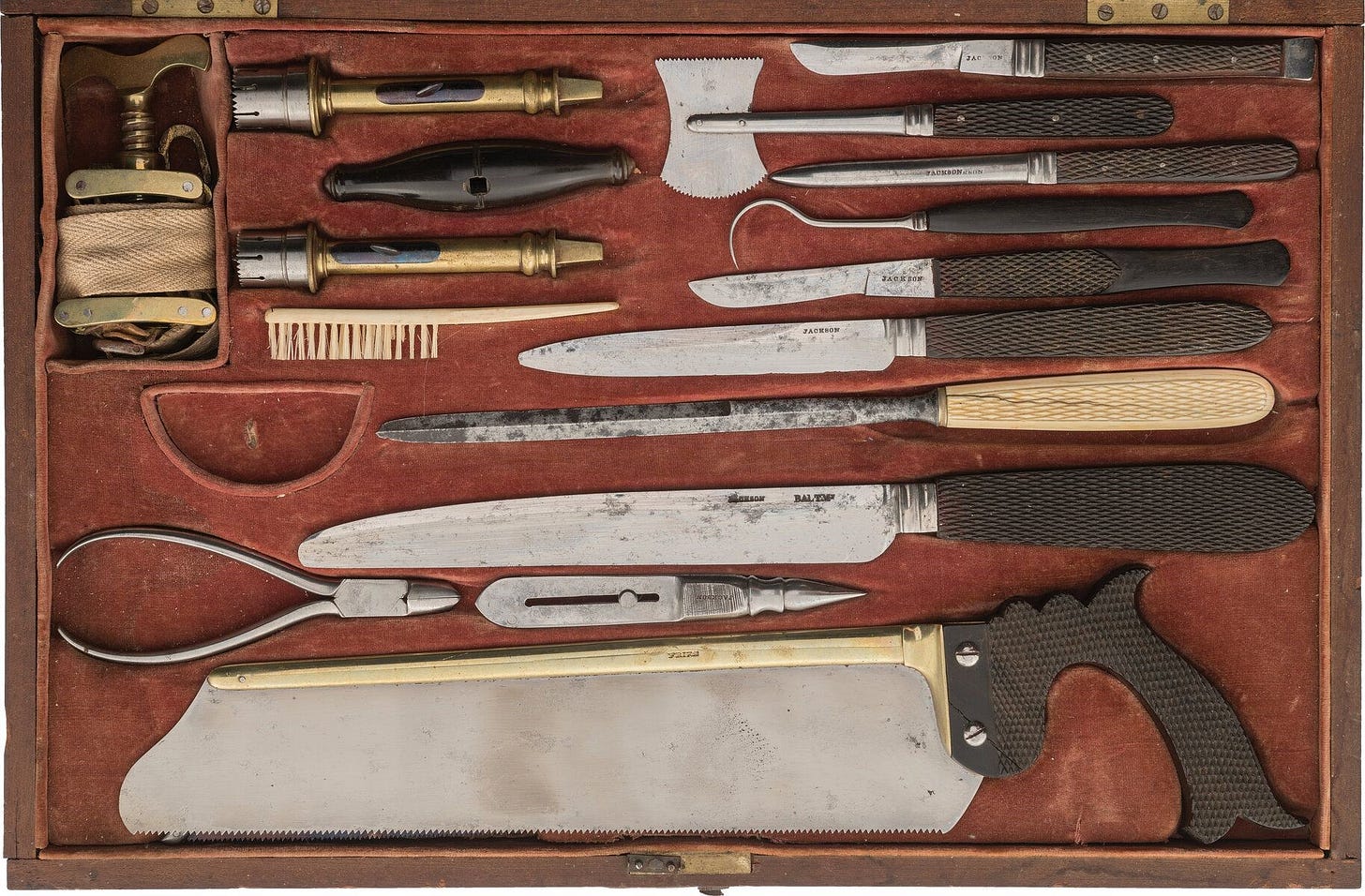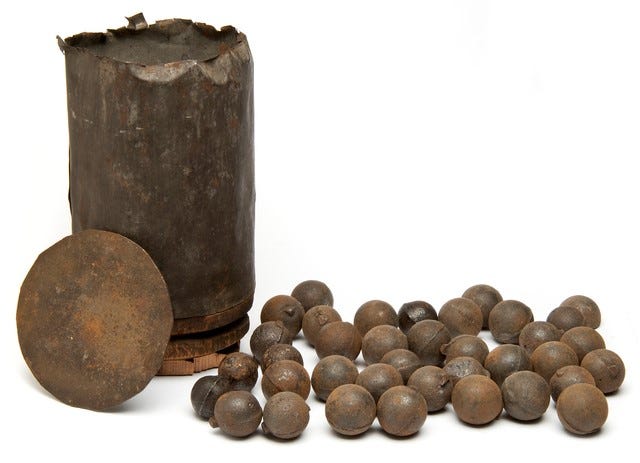Book Review-Southern Storm: Sherman's March to the Sea
Southern Storm: Sherman’s March to the Sea by Noah Andre Trudeau. This is the story of the campaign that helped to break the back of the confederacy and end the American Civil War. On September 2, 1864, three and a half years into the deadliest war in U.S. history, Major General William Tecumseh Sherman captured Atlanta. After more than two months of planning and preparation, Gen. Sherman stepped off on his “March to the Sea” on November 15, 1864. His army burned Atlanta to the ground as they left and then engaged in a campaign of “total war” for the next month as they travelled over 300 miles in a southeasterly direction until they captured Savannah on December 21, 1864. In Southern Storm, Trudeau uses first hand accounts from soldier diaries, newspaper stories, and official dispatches to tell a detailed story of this military action.
General Sherman took a force of about 60,000 troops and tore a 50 mile wide 300 mile long path of destruction from the railroad hub of Atlanta to the port city of Savannah. In his path he burned farms, plantations, government buildings, and anything else he deemed useful to the confederate military effort. Cut off form his supply chain, his army fed itself by “foraging” food from any source they could find. This meant stealing produce and livestock wherever they found it for themselves and destroying any excess they could not eat. They destroyed telegraph lines and railroads to disrupt enemy communications and logistics. Sherman’s troops would famously pile up the railroad ties and make bonfires, and then heat the rails and wrap them around trees to ensure they could never be used again. This technique of railroad destruction became known as “Sherman’s neckties.”
Aside from being cutoff from his supply chain, General Sherman also had no communication lines with the rest of the Army or the Union. With no way to communicate, his force effectively disappeared from Union command into the interior of Georgia until December 12, 1864 when a small boat containing three Union soldiers made there way down the Ogeechee River and out to the Atlantic Ocean where they linked up with the Union Navy and established first contact. The Union took Fort McAllister on December 14, 1864 which gave them direct access to the Atlantic Ocean and surrounded the confederates in Savannah on two sides. The confederates had no chance for any meaningful resistance so in the early morning hours of December 20, 1864, the confederate army evacuated Savannah to the north into South Carolina using the cover of darkness to mask their movement. Sherman’s soldiers entered the city on December 21, 1864 and captured it without firing a shot.
This campaign is credited for breaking the back and the spirit of the confederacy. The logistical damage done to the resources, communication, and supply lines made it very difficult for the confederate army to continue fighting. The moral defeat of having the Union Army march unobstructed through the heart of the confederacy damaged their will to fight. General Sherman was heavily criticized and is still hated by some in the south because of the total destruction he brought to Georgia. His targeting of civilian plantations, farms, and other infrastructure is seen as inappropriate and offensive to the sensibilities of the chivalrous southern gentlemen.
My take on Sherman’s march was that it was the most effective and humane way to end the worst conflict in U.S. history. While destroying private property of non-combatants might seem harsh and uncalled for, the flip side is there were very few casualties on either side. There were a few light skirmishes and some small ambushes, but no major battles or large losses of life. The unique blend of modern weaponry with premodern tactics and medicine made the American Civil War an especially deadly conflict. The use of the Minie ball in rifles and canister shot in artillery being fired at troops massed in close order formation created death and mayhem on a scale not seen in previous centuries of armed conflict. Without anesthesia or antibiotics, field hospitals became butcher shops that were rife with post injury infections and deaths that would be
easily prevented today.
The fact that Sherman was able to avoid major battles and bring the war to an end with very little bloodshed justifies the destruction of private property. The alternative to destroying the physical property of the confederacy would be to destroy the physical bodies of the confederacy. In war, especially one with the objective of re-unification, preserving life over property is the ideal goal. His destruction of infrastructure was humane because it saved the lives of many thousands of Americans, north and south alike. General Sherman’s outside the box thinking, innovation, and courage to try something different make him a real hero. I admire people who are able to step back from a problem, look at it from a different perspective, and think of a solution no one else had considered.








